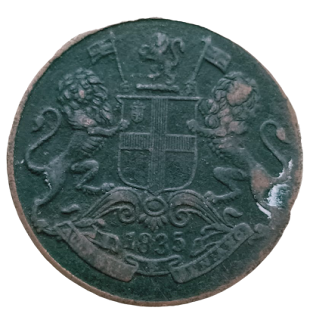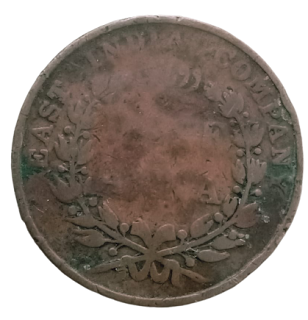East India Company 1941 One Rupee Coin
The East India Company 1941 One Rupee Coin: A Glimpse of History and Elegance
In the realm of numismatics, certain coins transcend their mere monetary value to become iconic representations of history and culture. One such numismatic marvel is the East India Company 1941 One Rupee Coin, a token that encapsulates a significant era of India's past and exudes an air of timeless elegance. As we delve into the story behind this remarkable coin, we are transported back in time to witness the amalgamation of artistry, politics, and commerce, all encapsulated in a single piece of currency.
A Historical Window: The East India Company
To understand the essence of the 1941 One Rupee Coin, we must first cast our minds back to the historic East India Company itself. Formed in 1600 by a royal charter granted by Queen Elizabeth I, the East India Company was established to facilitate trade with the East Indies, encompassing modern-day India, Bangladesh, Myanmar, and Indonesia. Over the centuries, the company gradually transformed from a modest trading venture to a paramount force that altered the destiny of entire nations.
The 18th and 19th centuries marked the zenith of the East India Company's influence, with its control over vast territories in the Indian subcontinent. It acted as an intermediary in trade and established its rule through the employment of military might and strategic alliances with various princely states. The coins minted under the company's authority bear witness to this turbulent and transformative period in India's history.
The 1941 One Rupee Coin: An Object of Desire
The year 1941 holds particular significance in the context of numismatics, for it marks the issuance of the East India Company's One Rupee Coin, a creation that has since captivated the imagination of collectors and enthusiasts alike. The coin, crafted with a blend of artistry and precision, is a testament to the technical prowess of the time.
The obverse of the coin portrays the majestic bust of King George VI, the ruling monarch at the time. His regal profile gazes confidently into the distance, as if surveying the vast dominions over which he held sway. The intricate detailing of the portrait reflects the masterful skill of the minting process, encapsulating the aura of the era's coin-making traditions.
On the reverse side of the coin, the majestic emblem of the East India Company takes center stage. The company's coat of arms, featuring a lion and a unicorn flanking a shield adorned with the Cross of St. George, symbolizes strength, resilience, and imperial might. Surrounding the emblem are inscriptions denoting the coin's denomination, "One Rupee," and the year of issue, "1941." Each element harmoniously complements the other, contributing to the overall allure of the coin.
A Tapestry of Heritage and Commerce
The East India Company 1941 One Rupee Coin weaves a tapestry of heritage and commerce, narrating the narrative of a nation in transition. It serves as a tangible link to a time when India's fate was intricately entwined with the policies and ambitions of the East India Company. The coin's inscription in English, Persian, and Urdu mirrors the cultural diversity that the company encountered in its vast dominions.
Beyond its historical significance, the coin was an essential medium of trade during its era. As a one-rupee denomination, it facilitated transactions and commerce, circulating through bazaars, markets, and the hands of countless merchants and citizens. The coin's journey from one pocket to another represents a microcosm of the bustling economic activity of the time.
The Legacy Continues: A Numismatic Treasure
The passage of time has done little to diminish the allure of the East India Company 1941 One Rupee Coin. On the contrary, its scarcity and historical significance have made it a coveted item in the world of numismatics. Collectors and historians avidly seek out this exquisite coin to add to their collections and study its intricacies. Auction houses and numismatic fairs often witness intense bidding wars over this tangible relic of history, as enthusiasts recognize its unique appeal.
Owning a piece of history in the form of the 1941 One Rupee Coin is akin to possessing a time capsule, connecting us to an epoch of grandeur and change. It whispers tales of trade routes and conquests, of princely states and British dominion, of economic exchanges and cultural amalgamation.
Conclusion: An Enduring Tale of Elegance
The East India Company 1941 One Rupee Coin endures as an ambassador of history, a representative of a bygone era that continues to captivate generations. Its allure lies not merely in its monetary value or rarity, but in the story it narrates - a tale of exploration, commerce, and diplomacy. With every glance upon its intricately designed surface, we find ourselves drawn into the past, enraptured by the elegance of numismatic artistry and the poignant reminders of an era shaped by the East India Company.










